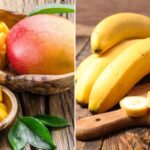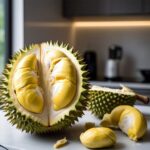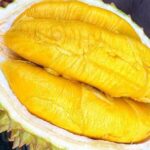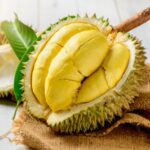Durian is a fruit that is currently in season and loved by many. This fruit, dubbed the “king of fruits,” has long been a favorite of many due to its distinctive, rich, and aromatic flavor. However, how can one distinguish between naturally tree-ripened durian and chemically ripened durian? Let’s find out.
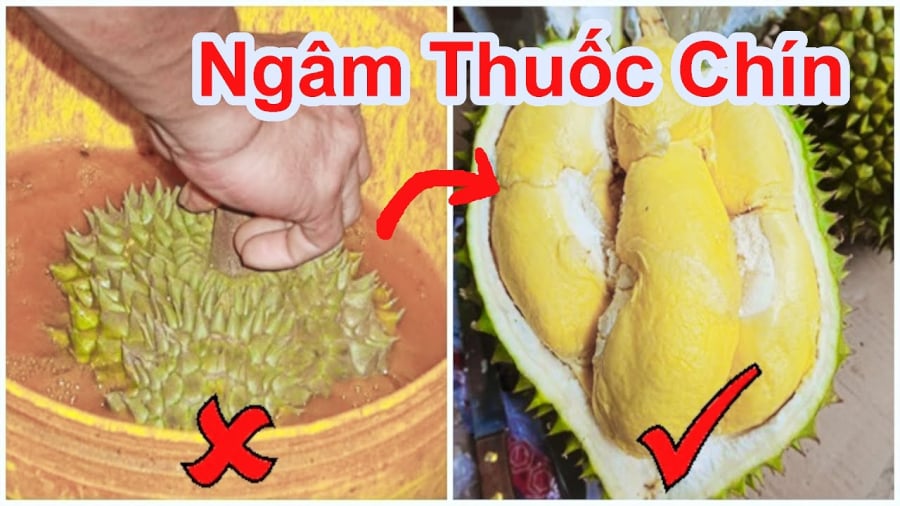
Examine the Durian’s Stem and Spikes
The stem is the most noticeable feature.
Naturally Ripened Durian: The stem is usually light brown or slightly dry, but remains fresh and supple when gently squeezed. Notably, the stem of a naturally ripened durian doesn’t break off.
Chemically Ripened Durian: The stem is darker, often dry and brittle, prone to breaking due to early harvesting and artificial ripening. Sometimes, the stem may appear wilted or emit an odd odor.
The spikes of the durian also provide important clues:
Naturally Ripened: The spikes are softer, with slightly rounded tips, and the distance between them is slightly wider due to natural ripening.
Chemically Ripened: The spikes are sharp and rigid, and the distance between them is narrower as the fruit hasn’t naturally ripened yet.
Aroma – An Unmistakable Sign of Ripeness
The aroma of durian is a clear indicator of its ripeness.
Naturally Ripened Durian: Emits a strong, pleasant fragrance that hints at the fruit’s delicious taste.
Chemically Ripened Durian: Has a sharp, sometimes chemical-like aroma. The fragrance may be strong but lacks depth. Sometimes, there is no aroma at all, even when the fruit is cracked open, which is a telltale sign.
Inspect the Base of the Durian
The base of the durian is where it starts to split open when ripe.
Naturally Ripened Durian: The base will slightly crack, revealing a glimpse of the golden pulp inside. When gently pressed, it feels soft.
Chemically Ripened Durian: The base doesn’t crack or cracks unevenly. You need to forcefully pry it open with a knife to see the pulp. It feels firm and hard when pressed.
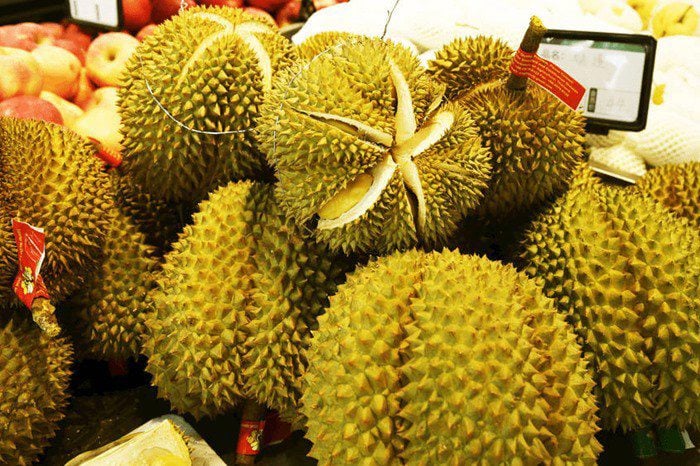
Examine the Pulp after Cutting Open the Durian
Once the durian is cut open, the pulp is the key indicator.
Naturally Ripened: The pulp is golden and glossy, with a natural aroma. It’s creamy and rich, and may be slightly mushy if left for long. The seeds are small and easy to separate from the pulp.
Chemically Ripened: The pulp looks dull and pale, with uneven color. It may still feel firm and taste bland and astringent. The seeds are large and difficult to separate.
Weight and Feel
Naturally ripened durian tends to be lighter as it loses some moisture during the natural ripening process. It feels lighter than its size would suggest.
Chemically ripened durian is heavier and denser.
Price and Origin
Typically, naturally ripened durian is more expensive due to a longer harvesting period and lower yield. If you come across durian that is surprisingly cheap but looks perfect, it’s likely chemically ripened or treated with chemicals.
It’s advisable to purchase durian from reputable sources. If the price seems too good to be true, it’s best to avoid it.

























